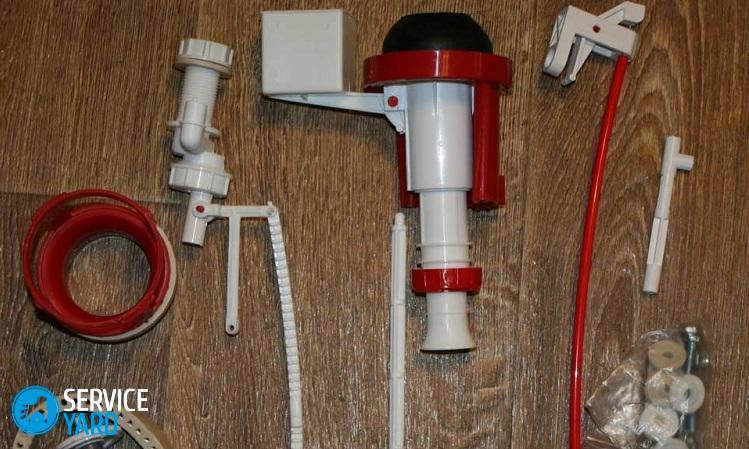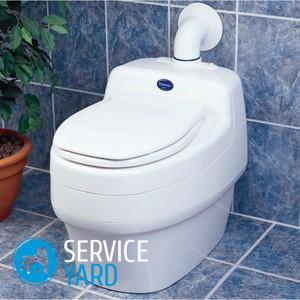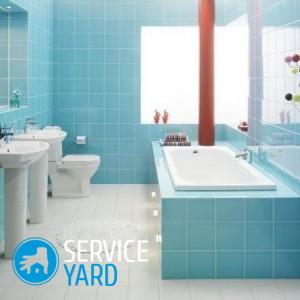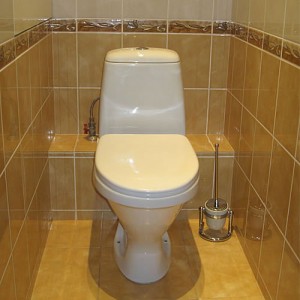Adjustment of fittings of a toilet flush tank with two buttons
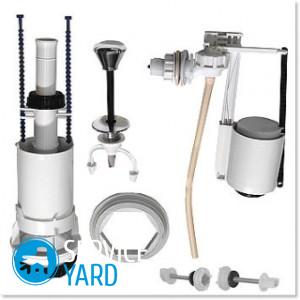
Modern plumbing is quite durable and reliable. But, like any equipment, a plumbing fixture can go wrong or completely fail. The topic of today's article is to adjust the fittings of the toilet flush cistern: with two buttons or one. Of course, you can call and plumbing, however, with many problems you can cope on your own. You will be convinced of this by reading the information from this article.
to contents ↑General information
The most common design of the toilet, such as a “compact," when the tank is mounted directly on the toilet. Many manufacturing companies today release exclusively models with buttons - one or two.
The option with two buttons is a more complex drain valve device, but it saves water when flushing:
- By pressing one button, the tank is completely empty.
- Activation of the second button leads to a partial emptying of the tank.
How to remove the cover?
Many modern models are equipped with buttons with rods, so that the removal of the lid is effortless. However, many modifications to the drain tanks require certain manipulations to remove the cover.
If the button is one
In models with one button, to remove the cover, press the metal ring that surrounds the button, and then turn it counterclockwise.
Important! If you could not turn the ring, drip a few drops of liquid oil or try to complete the task with a screwdriver.
Carefully move the lid to a position perpendicular to the usual and release the drain tank from the plastic clothespins. After such simple manipulations, it remains to remove the cover and set it aside.
If there are two buttons
To remove the cover on the two-button reservoir, press any of the buttons. In this case, a technological groove becomes available. Now it remains to dismantle the buttons, one after another. Next are the dismantling of the fixing screw and the removal of the cover.
to contents ↑Main malfunctions and how to fix them
Before performing repairs to adjust the water level in the toilet flush tank, you must find the root cause of the malfunction. In total there are 3 types of typical breakdowns:
- Water constantly flows - into a room or sewer.
- There is no water pressure at the entrance to the tank.
- It is not possible to control the drain mechanism.
The causes of these breakdowns are different. The repair algorithm depends on the cause.
Pear (cork) does not fit snugly
You can minimize the risk of such a problem if you purchase reliable plumbing from trusted manufacturing companies.
Diagnosing is simple enough. Remove the cover, apply extra force to the plug stem by pressing it against the drain hole. If the leak is eliminated, the situation can be corrected if the cork is slightly heavier by hanging a stainless steel nut on it.
If the described manipulations did not resolve the leak, the plug must be replaced or the surface of the drain hole should be cleaned of deposits. This is especially true if the water is too hard.
Defective mechanism that regulates the flow of water into the drain tank
In this case, the constantly entering water is discharged into the toilet bowl through the overflow pipe.Pay attention to whether the accessories of the fittings are working: fasteners, rods, inlet valve or float.
In the event of a malfunction, any of the listed parts must be replaced or repaired.
Important! A simpler option is to adjust the position of the float with subsequent fixation.
Water leak into the room
How to adjust the toilet bowl, if the water does not even flow out into the sewer, but into the bathroom? There are two reasons for this malfunction:
- violation of the integrity of the tank;
- insufficient adhesion of gaskets at threaded joints.
In the latter case, the fault can be eliminated by tightening the threaded connection or replacing the rubber gasket.
Insufficient water pressure (or its complete absence) at the inlet to the drain vessel
The cause of this phenomenon is the intake valve contamination. To eliminate this situation, it is necessary to install a water filter immediately in front of the place of connection to the water supply system.
If such a nuisance takes place, let the water out of the tank, close the valve to let the water in. Then unscrew the valve, clean its inlet with a sewing needle or thin wire. Then flush the valve under running water.
to contents ↑Two-Button Tank Problems
To implement the principle of complete or partial emptying of the drain tank, the valves are equipped with a diaphragm valve. The most common malfunctions are.
Continuous water leakage
The reason is the wear of the locking membrane. You can eliminate the problem by replacing the membrane.
Falling control buttons
This is the most common malfunction. To avoid it, do not press the buttons too hard. If the buttons are sunken, return them to their original position by first removing the cover.
Water remains in the tank: the drain does not work
The problem occurs when the parts of the linkage mechanism break down or when they are disconnected. You can fix the problem if you replace the failed parts or correctly fix the hooks.
Adjustment of the toilet flush cistern: independent regulation of the water supply
The essence of adjustment, regardless of the number of buttons, is to correctly set the float.
Important! The correct position is the position of the float, in which the water supply stops when it reaches a level of 2-3 cm from the edge.
Regulation is carried out by bending the brass rod or by moving the float along the guide with subsequent fastening. In models with a vertical arrangement of the float, you can achieve its correct position by rotating the adjusting screw in one direction or another.
to contents ↑Important! Also make sure that the top edge of the overflow pipe is 1-2 cm higher than the water level in a fully filled tank.
Stock footage
As you can see, adjusting the water level in the toilet bowl is easy. Many problems associated with the trigger mechanism of the toilet can be eliminated independently, without resorting to the help of a specialized company.



